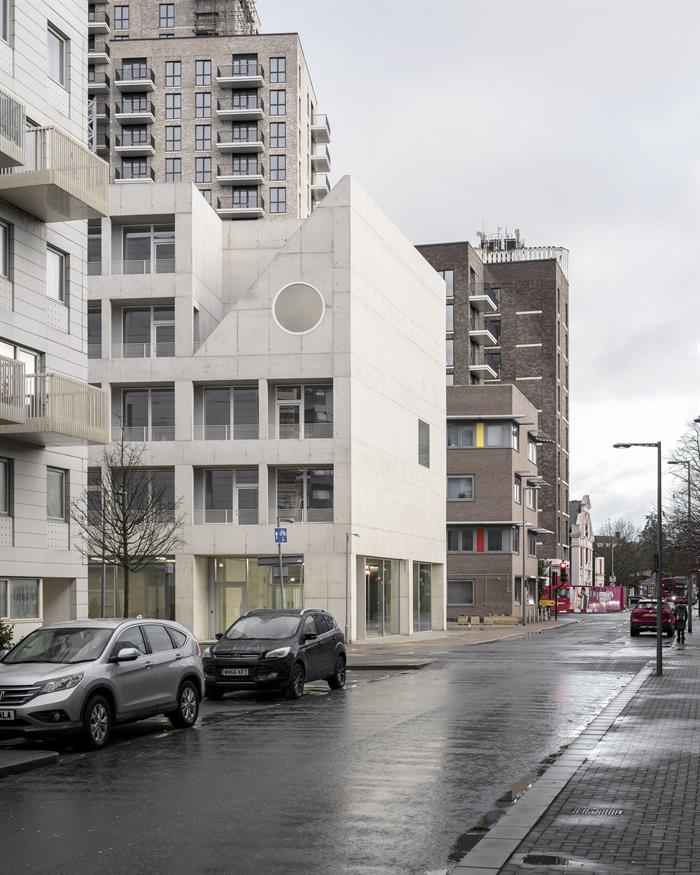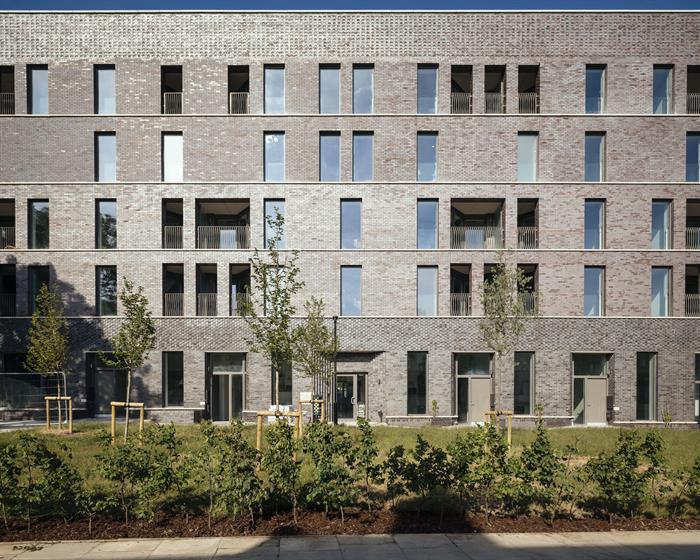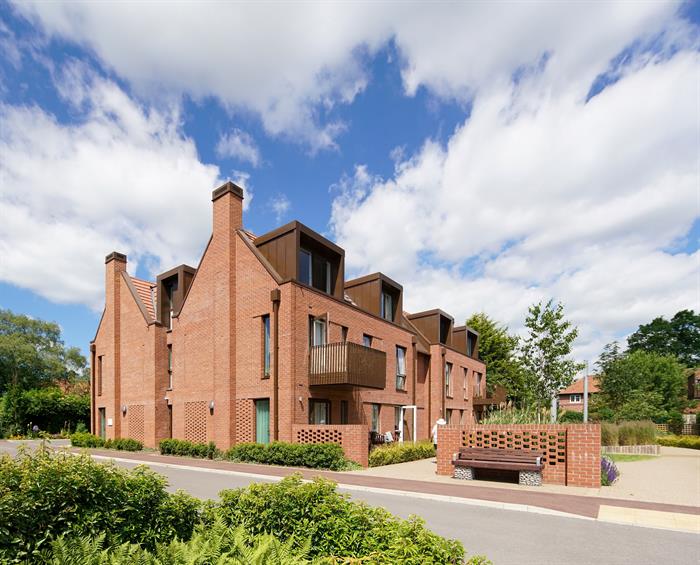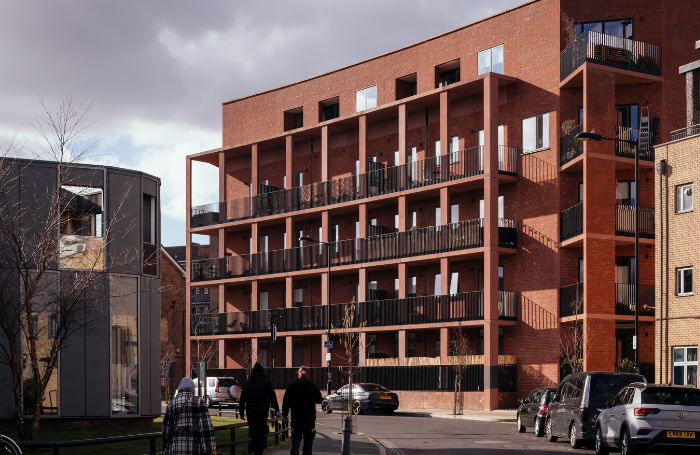The Royal Institute of British Architects (RIBA) has today announced the four projects shortlisted for the 2023 Neave Brown Award for Housing. Named in honour of modernist architect Neave Brown (1929 – 2018), the award recognises the best new examples of affordable housing in the UK.

The four shortlisted buildings are all commended as exceptional examples of affordable housing, but the judges also note that each demonstrates, in its own way, how innovative architectural design can play a significant role in helping to address wider societal issues.
In Yorkshire, a development for older people (New Lodge Community) is embedded in the heart of the local area, with flexible design ensuring residents can age-in-place by adapting to their changing needs.

An apartment complex in east London (A House for Artists) offers an imaginative response to rising housing costs. In exchange for reduced rent, resident artists use a street-facing exhibition space to deliver free creative programmes for benefit of the local community.
In London’s Camden, the regeneration of an existing estate (Agar Grove Phase 1b) is a pioneering example of sustainable social housing, on track to become the UK’s largest Passivhaus (an outstanding energy efficiency standard) scheme.
And in North London, three housing blocks (Taylor & Chatto Courts and Wilmott Court, Frampton Park Estate) illustrate how outstanding design can integrate seamlessly into and enrich an existing urban environment.

Jury Chair and Director at Peter Barber Architects, Alice Brownfield, said:
“This is a really exciting shortlist illustrating that housing design has a significant role to play in helping address wider societal issues and, moreover, that social and affordable housing is often at the forefront of this. From housing design that facilitates a rethinking of traditional rent models, protecting space for creatives in our cities with genuinely flexible and creative co-housing, to highly sustainable council homes and dignified housing for our aging population placed at the heart of a community. The projects evidence how exemplary design can be transformational to people’s lives.”

RIBA President Simon Allford said:
“At a time when the cost of living is among the most pressing issues of the day, these examples of affordable housing outline possibilities for a better future. We need more homes, that are better designed in terms of amenity, carbon, context, community and culture – we must focus on them all. Collectively, these schemes help raise the bar for architecture with purpose, showing how forward-thinking design can enrich the lives of both residents and the wider community. Congratulations to all of those involved in the shortlisted projects.”
The four housing developments shortlisted for the 2023 Neave Brown Award for Housing are:
- A House for Artists by Apparata Architects. A flexible live/work space for 12 artists arranged across five floors.
- Agar Grove Phase 1b by Mæ. A substantial regeneration masterplan on southern portion of Camden’s Agar Grove Estate.
- New Lodge Community by PRP. A redevelopment composed of affordable extra-care apartments, a new 44-bed care home, and refurbishment of the existing Folk Hall.
- Taylor & Chatto Courts and Wilmott Court, Frampton Park Estate by Henley Halebrown. A collection of 16 social-rent and four shared-ownership homes in three 5-storey alongside a new urban block with 15 shared-ownership and 10 private-tenure homes.
The shortlist was selected from the 2023 RIBA Regional Awards winners by an expert panel of judges: Jury Chair Alice Brownfield, Director at Peter Barber Architects, Prisca Thielmann, Associate Director at Maccreanor Lavington, and Aaron Brown, son of Neave Brown, Design Director at Smith & Brown Ltd.
The winner of the 2023 Neave Brown Award for Housing will be announced at the RIBA Stirling Prize ceremony on Thursday 19 October 2023 at Victoria Warehouse in Manchester.
See more on this year’s shortlisted projects.
Notes to editors:
- Media contact: Ryan.Johnston@riba.org
- Images and citations can be downloaded here
- Neave Brown (1929 – 2018) was a modernist housing architect, best known for a series of housing estates in and around Camden in North London. In 2018 he was awarded the UK’s highest honour for architecture, the Royal Gold Medal for Architecture, which was approved personally by Her Majesty The Queen. Recognition for Neave Brown came late in life. His work in the 1960s and 70s was rejected for eschewing the high-rise norms of the time and instead – most notably in the case of Alexandra Road (1978) – focussing on a street-based alternative that placed an emphasis on communal spaces and shared facilities, whilst working within the constraints of local authority budgets and planning requirements and a dense and constrained urban context. His plans made clever use of space, creating capacious and generous rooms for occupants.
- The shortlist is selected from RIBA Regional Award-winning projects of ten or more homes completed and occupied between October 2019 and January 2022, with at least one third constituting affordable housing.
- The RIBA Awards have been running since 1966. No matter the shape, size, budget or location, RIBA Award winning schemes set the standard for great architecture all across the country. RIBA Awards are for buildings in the UK by RIBA Chartered Architects and RIBA International Fellows. Entries are to be submitted to the region or nation in which the building is situated.
- The Royal Institute of British Architects (RIBA) is a global professional membership body that serves its members and society in order to deliver better buildings and places, stronger communities and a sustainable environment. Follow @RIBA on Twitter for regular updates









